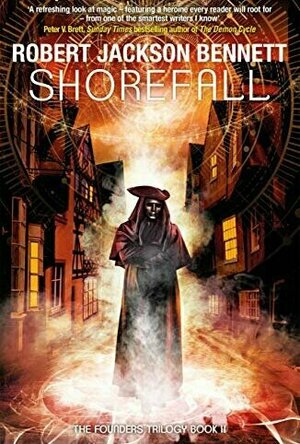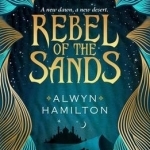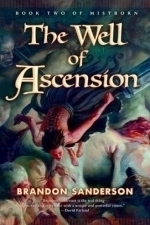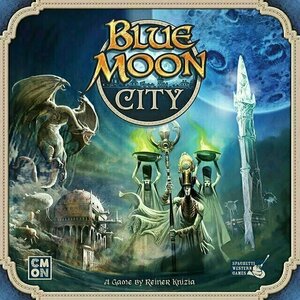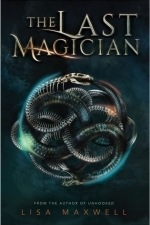Shorefall picks up around three years after the events of Foundryside, when a small crew stand up against the mighty, powerful families of the city, stop their evil plotting and strike out on their own. They have set up their own, independent scriving house, making magical machinery, and helping others to do the same. A bit like BrewDog, but without the financially dubious shareholder arrangements.
In this world, magic comes in the form of scriving - bending reality to make objects behave in a certain way (persuading a door it cannot open without a specific person being present, convincing an arrow it is falling, so must accelerate accordingly, albeit in a straight line, etc). Most of the book's plot and action centre around this, and it becomes quite draining, and a stretch at times. I forgave the first book quite a lot in this regard, because it was world-building, but this much world-building in a second book seems wrong. And the mechanics of it are so much like coding that that is all you can think of. At times it is like watching an episode of 24, but instead of following Jack Bauer's thrilling escapades, you are watching Chloe coding a macro to speed up her timesheets while being vaguely aware that something exciting is happening.
The book starts very strongly, we are in the company of Sancia and Orso as they appear to be down on their luck and having to sell their work to make ends meet. Cue: exciting espionage scenes as Sancia sneaks off to steal.
Sadly, this opening chapter in which we had no idea what was happening was the best one. So many times throughout the book the crew were on some mission or other for some reason, but I couldn't for the life of me remember what or why, and nor did I particularly care. The plot just seemed to be in a backseat with the world-building driving with no sat-nav. And so was character development, as all the main characters just completely plateaud and didn't change in the slightest.
In short, I found the book very dull and drawn out and the second half was a real chore.
Schulz und Schulz: St Trinitatis Leipzig
Wolfgang Jean and Stefan Muller
Book
Text in English & German. Three places mark the chequered history of the provost church of St...
Goddess in the Stacks (553 KP) rated Rebel of the Sands in Books
May 19, 2018 (Updated May 19, 2018)
The country is definitely middle-east inspired, but there's a lot of religion-bashing, and complaining about the culture oppressing women. It's the same problem I have with a lot of knight-and-castle era fantasy - just because historically in OUR world those time periods weren't kind to women, doesn't mean they have to be the same in fantasy. It's FANTASY! It can be anything you want! Break the tropes! It's a fine line to walk, taking the good parts of a culture without just cherry-picking and appropriating the culture, and who's judging what the good and bad parts are, anyway? So I understand it's difficult, but bashing the culture in a book inspired by their mythology is not quite cool, either. I feel like City of Brass, another fantasy book set in the middle east, hit a better middle ground of embracing the culture of the inspiration without bashing parts of it.
That gripe aside, I really enjoyed the world-building. I'm not quite sold on the characters yet - Amani is far too quick to abandon things she should fight for - but I'm interested enough to see how they progress in the next two books.
You can find all my reviews at http://goddessinthestacks.wordpress.com

9 Clues: The Ward HD (Full)
Games and Entertainment
App
70 % OFF - LIMITED TIME OFFER! Don’t miss out! Plunge into the creepiest edition yet in the...
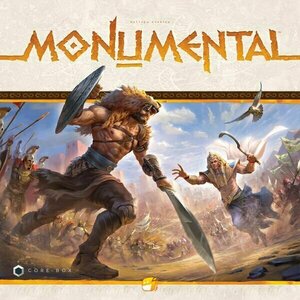
Monumental
Tabletop Game
In Monumental, each player will control a civilization that will evolve through his city: a grid of...
Purple Phoenix Games (2266 KP) rated Blue Moon City in Tabletop Games
Aug 27, 2021
Blue Moon City is a fantasy-set, hand management, set collection, city rebuilding game for two to four players. In it players are attempting to help reconstruct the war-ravaged Blue Moon City to its former glory by utilizing its citizens at crucial construction sites in order to earn crystals. It sounds weird, and it is, but read further to understand why. Oh and there are dragons that act like supervisors or teachers when they come stand by you to watch you take a test and judge you from behind the whole time.
To setup, place the Courtyard tile in the middle of the table and build the city in a 5×5 grid minus the corner tiles. Each player chooses their color and takes the mini and discs of that color. Place the dragons nearby, along with the Obelisk token, draw deck of cards, crystal chits, and dragon scale chits. Deal each player a hand of eight cards and the game may begin!
Blue Moon City is played over a series of turns, and each turn is divided into four phases: Movement, Contribution, Reset, Pass Turn. During the optional Movement phase, a player may move their pawn one to two orthagonal spaces (N/E/S/W) or use cards from their hand for their special movement powers for player pawn AND/OR dragon movement.
Next, a player may discard cards from their hand to contribute to the reconstruction of a building during this optional Contribution phase. By discarding a number of cards whose values equal or exceed the printed value on the matching-colored building tile a player will be able to place a disc upon the tile. Once the tile’s contribution spaces have been filled with discs it can be scored. To score a building tile, determine majority presence on the tile and award the Majority Bonus to that player. Any disc presence in minority will receive the Construction Bonus, including the majority winner. If a player had contributed on a tile that also was hosting a dragon mini, that player would earn a dragon scale from said dragon supervisor. Players may also make their way back to the Courtyard tile in order to donate crystals to the Obelisk. Doing so will allow the player to place one of their discs on the Obelisk itself, and the game ends when a player has placed the proper number of discs upon the Obelisk per the number of players.
When the pile of dragon scale tokens has been exhausted, players will check who currently holds the majority of scales. They will be awarded with six crystals, and any player holding three or more will receive three crystals. Turn all the dragon scales back into the supply to be earned again.
During the Reset phase a player may discard any number of cards from their hand and draw back as many cards plus two. So if a player discards zero cards from hand they would still draw two from the deck. Discarded four cards? Well redraw six.
Finally the active player will Pass Turn to the player on their left, who will complete their turn of the same four phases.
Play continues in this fashion until one player has placed the target number of discs on the Obelisk token to claim victory and dragon approval!
Components. Okay, this is a tough one because overall I love the components in the game. The dragons and player pawns are cool minis (from CMON that just makes sense). The Obelisk token is huge and I love how it looks. The art overall is really creepy, but well done, and enjoyable to behold. The player discs, though poo-pooed by other more-renowned reviewers, I find to be just fine. They are a smooth plastic in the player color and I have no problems with their quality. But speaking of colors… I agree with others that have stated the colors of some cards (or suits, if you prefer) should have been made a different color. What I mean is that the game is very greige-heavy throughout. The card suits (except the red, yellow, and blue) are a variation of the same greige that makes eyes strain to determine exactly which color they are holding. I understand that a certain aesthetic was targeted, and they certainly achieved that, but these colors do make it more difficult to play, especially for us that are starting to over-ripen with age.
Those component gripes aside, this is an incredible game. The color choices aside, I love everything about it! The movement from tile to tile, and trying to align movement with the cards in hand and keeping some back so that you can use them to move the dragon to your spot as well is just fun mental exercise. Each value 1 and 2 card has a special ability, be it movement bonuses, changing other cards’ colors, or just being straight up wild cards, and having to choose to use the cards as either the special power or for contribution values creates tons of crunchy gamer choices. Not super-crunchy. Turns won’t be mentally debated for 10 minutes, but deciding how best to use the hand of cards you hold is great.
I also very much enjoy the theme of the game, even though I was hoodwinked by the title (not really, just trying to tie it all back). I love fantasy worlds and having a unique theme is a definite plus for me. I haven’t yet thrown in the expansion tiles, but I will the next time I play. If you need a relatively quick-playing jaunt through a ravaged city, I recommend you check out Blue Moon City. Purple Phoenix Games give it a 10 / 12. It has nothing to do with beer, which would be another great theme idea – drunken dragons – but I will be holding onto this one for quite a while.
Kyera (8 KP) rated The Last Magician in Books
Jan 31, 2018
Esta is an orphan and a thief who is tasked with going back in time to alter the events of a heist that occurred in 1904 New York City. New York City is a world of mages, people will unique affinities, like Esta's ability to manipulate the fabric of time. Esta herself is a likable main character and the lens through which we learn about the other characters. As she is also from our time period, she must occasionally readjust her worldview, actions or outward opinions to match those of the time. Despite the fact that she is a thief, we get to see her smart and sarcastic side as well as her stubborn determination.
Despite the large cast of characters, I felt that they were generally well-developed and had the time to grow. I really enjoyed getting to know Dolph as the multi-faceted head of a gang and Harte the magician that Esta has been warned against. The crew reminded me of the Dregs from Six of Crows at times, although they didn't have quite the same chemistry. It was still enjoyable to watch them, although I hope that the others in the gang are developed further because I would like to see more of their personalities or backstories.
There wasn't as much focus on the magic dynamics as I expected there to be, but I was so enamored by the characters and world-building that it wasn't noticeable. Maxwell did a fabulous job reconstructing New York City at the start of the twentieth century and I fell in love. Overall, I felt the book satisfyingly wrapped up most of the threads from the book and introduced a few more that can be explored in book two. I really enjoyed the read and cannot wait to see how it ends in the second book.

Nightmares from the Deep™: Davy Jones, Collector's Edition HD (Full)
Games and Entertainment
App
Reveal Davy Jones’ darkest secrets and defeat the nefarious sea devil once and for all! Museum...

2GIS – Offline maps
Navigation and Travel
App
2GIS provides 3D-maps of 180+ cities, contacts of 1.5 million companies, car routing and public...
